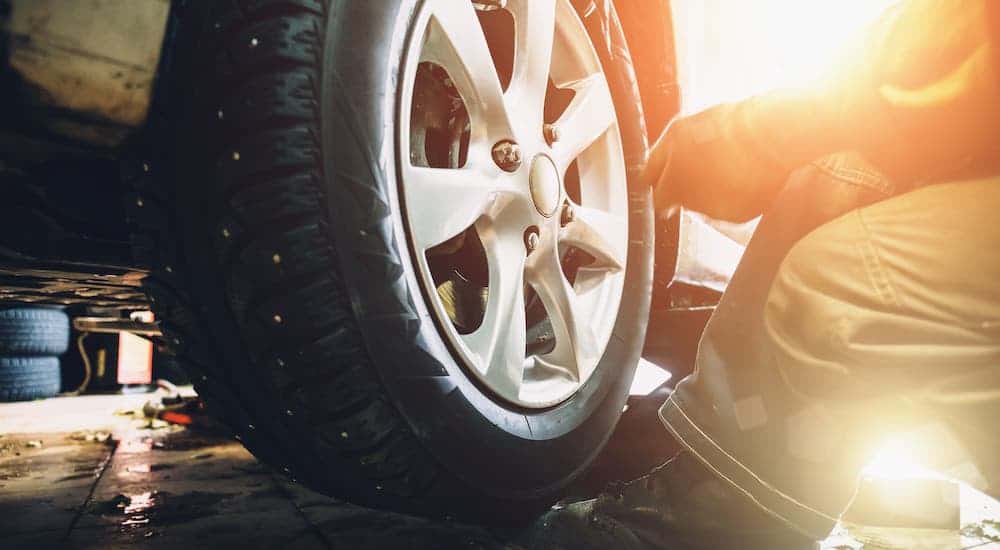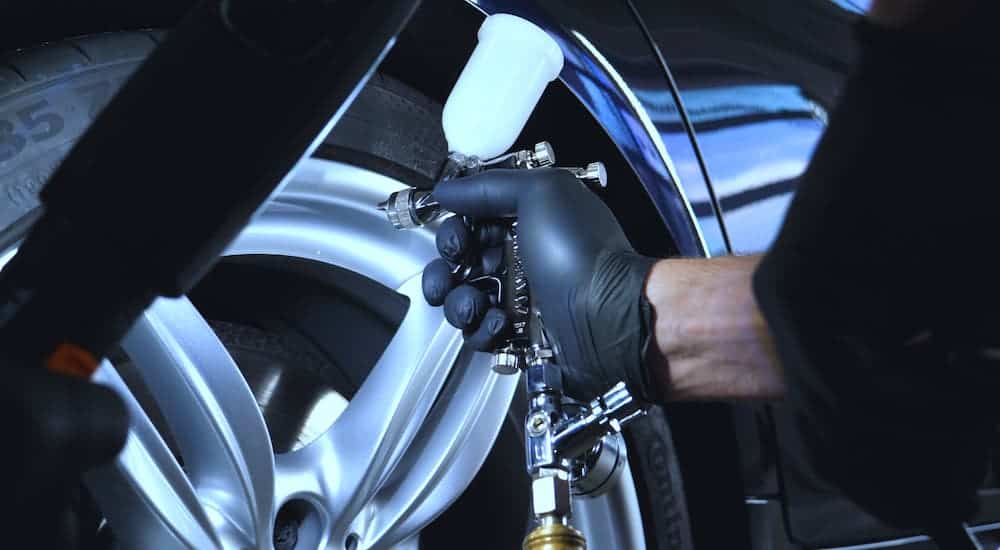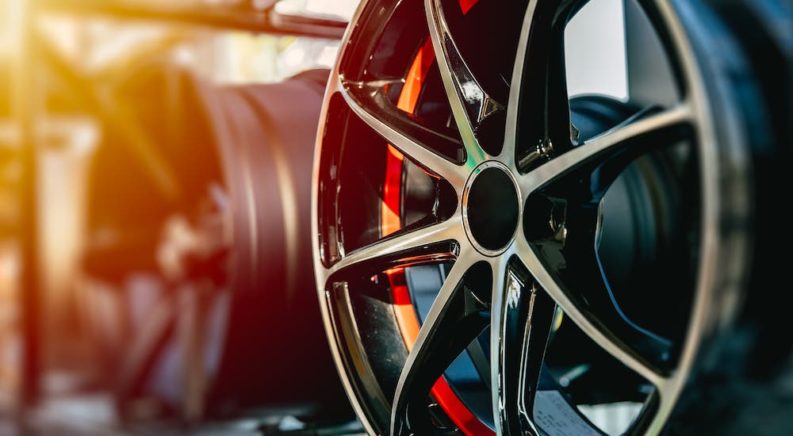Wheels can be an intimidating topic for many drivers, but knowing a few basic concepts can make a world of difference. There are many reasons why you might want some extra wheel knowledge, ranging from replacing damaged wheels to upgrading your current setup for performance or aesthetic reasons. Whatever your goals are, let’s run through what you want to look out for before you purchase your next set.
What is a Bolt Pattern?
One of the most important things to consider when looking at wheels is your vehicle’s bolt pattern. Bolt patterns are composed of two values: the first number is how many holes the wheel has for the lugs or bolts, and the second number is the diameter of the bolt circle. Depending on the car manufacturer’s origin, the second number may be expressed in millimeters or inches. Here are some common bolt patterns, written in both metric and inch measurements:
- 4×100 or 4×4
- 5×114.3 or 5×4.5
- 6×120 or 6×4.72
If the bolt pattern of the wheel you want does not match that of your car, you still have options. Some wheels can be redrilled to fit, or you can have adapters installed to match the different patterns. However, be careful if you explore these options, as they can have drawbacks when it comes to wheel strength and wheel fitment. Generally, you are better off finding a wheel that fits your car’s bolt pattern out of the box, and there are plenty of options in each bolt pattern to suit most buyers’ needs.

Wheel Width and Diameter
These are two very straightforward measurements to keep in mind and are usually expressed in inches. Width and diameter have a large impact on what tires can be paired with your wheels and need to be carefully considered. However, choosing the right wheel width and diameter for your car is a complex topic that is beyond the scope of this post. For now, we will be sticking with just the basics.
Most vehicles can accept multiple wheel widths and diameters. You can size up or down your wheels, but you will need to get different tires so that the overall circumference stays within spec and won’t disrupt your odometer. Further, if your new wheels are too wide, they may not fit inside your fenders and rub against the car body. Finally, keep in mind that some performance vehicles have different width wheels in the front and rear, commonly known as a “staggered” setup.
Offset and Backspacing
The offset is the distance from the horizontal center of the wheel to the actual hub mounting surface. You can have a positive, negative, or neutral offset. There are many factors that influence the offset of a wheel, and some aftermarket wheels can be produced in multiple different offsets. Offset is important to pay attention to because even if your new wheels are the same size and have the same bolt pattern as your old wheels, the new wheels still might not fit right if the offset is dramatically different.
Center Bore
The center bore is the part of the wheel that fits on the hub. Some wheels are hub-centric, and some are lug-centric – these labels explain how they center themselves during installation. Hub-centric wheels center on the hub, while lug-centric wheels center on the bolts. Bore is usually expressed in millimeters and needs to match the carl. However, many aftermarket wheels take this into consideration and use interchangeable hub-centric rings designed to work for multiple applications.
Wheel Material and Construction
Most wheels are made out of a metal or metal alloy, but as technology advances, we are starting to see some composite wheels like those made of carbon fiber. Metal wheels are produced in a variety of methods, including cast, forged, flow-formed, and 3D printed. There are benefits and drawbacks to each style of production.
- Steel Wheels – These are the simplest and cheapest wheels. They are generally only found on base model cars, although some people like to use them for winter tires. Steel wheels are very heavy and are never used for performance applications.
- Cast Wheels – This production method is very common and usually the most inexpensive and least time-consuming. The metal or metal alloy is heated and then poured into a mold to create the wheel. Generally, cast wheels have the highest weight and least strength of alloy wheels.
- Forged Wheels – A forged wheel is a less common method that is more expensive and time-consuming. The process involves CNC machining a block of billet aluminum to the desired size and shape. Heat and pressure are applied to finish the wheel. This type of wheel has more strength and less weight.
- Flow Formed Wheels – This is a hybrid process using the best parts between cast and forged. This is a great option giving you a middle ground in price and durability.
- 3D Printed Wheels – This is a very expensive process that is rare and currently in prototype. It is the most customizable method that can be used with titanium to create the lightest and strongest wheels.

Multipiece Wheels and Beadlocks
Most wheels are monobloc or one-piece, but there are also two and three-piece designs. Two-piece wheels generally consist of a face bolted to a barrel. Three-piece wheels are similar, but the barrel of the wheel is split into separate sections. The benefits of a multipiece design are the speed and availability in which it can be produced and built. Pieces are made to serve a variety of wheel specifications, so less inventory is needed with this type of design.
Beadlock wheels are generally seen in the off-road scene. Debeading is when the tire separates from the rim while driving. This is especially dangerous at high speeds, so that’s why these special wheels were developed. A lip is bolted to the wheel, clamping onto the tire to secure the bead and make debeading less likely.
Designs and Finishes
There are so many options to discuss when it comes to the aesthetics of wheel choices. I’m sure you have your own school of thought on what you find will fit your taste. There are seemingly limitless spoke options ranging from very few to hundreds. You can get wheels that run the gamut between very simple and ultra-aggressive.
There are endless color choices, including custom finishes like:
- Powder Coating – A very durable and corrosion-resistant finish, but one that can be cost prohibitive. The tires must be removed, and then the wheels need to be sandblasted or scuffed to bare metal. After they are prepped, the powder is applied, and the wheels are baked in an oven.
- Hydro Dipping – This is the most customizable finish out of these options. The wheels must be prepped similarly to powder coating. As the name suggests, the wheels are then dipped in water to finish it. But the interesting part is a graphic or design can be applied to the surface.
- Paint – Probably one of the most varied finishes in terms of price and application. Prep and price depend on what type of paint and equipment is used. Generally, the wheel needs to be sanded or scuffed up for good adhesion. Paint can be applied with aerosol cans, airless sprayers, or a spray gun and compressor. Multiple coats of primer, base coat, and clear coat are applied while sanding between coats as necessary.
- Rubberized Sprays – A very inexpensive option that is easy to apply and can be removed. The wheels need to be thoroughly cleaned and masked off. An aerosol is used to spray the coating onto the face of the wheel. The thickness of the material and the number of coats can also help reduce small blemishes in the metal.
- Vinyl Wrap – Just like rubberized sprays but a little more complicated to apply. A sheet of vinyl with adhesive backing is laid on the wheel. It then has to be manipulated with heat and squeegees to form to the contours of the wheel.
Making Your Choice
I hope this information helps you in your journey to find a set of wheels that fit all your needs. There are many resources and sites available where you can find specs and photos of how different wheels fit on various cars. Even if you aren’t comfortable making a decision on your own, you can have a professional wheel shop help you figure out what’s right for you. They have all the tools and equipment to make sure you are taken care of.

